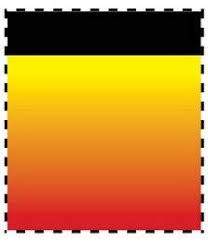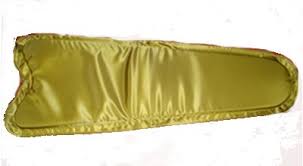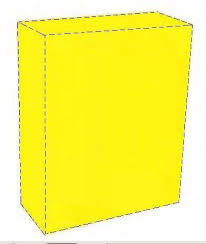1300 19th Street, N.W.
Suite 420 Washington, DC 20036
Color My World . . . Trademark?
 There’s colors on the street. red, white, and blue.
There’s colors on the street. red, white, and blue.
/Rockin’ In The Free World, music and lyrics by Neil Young


On a grey day towards the end of week 4 of our Covid conundrum, a little color is a welcome diversion–even if it comes from a trademark case. The latest development in this vibrant sub-set of trademark law concerns the packaging for Forney Hacksaw Blades and other hardware products. Forney claims that its particular packaging palette, shown at the top, featuring a black band at the top and then morphing from yellow to red, is as much of a trademark as the FORNEY name itself.

Now, claiming color is a trademark is nothing new. Way back when, Owens Corning registered “pink” as the trademark for fiberglass insulation, riding the popularity of TV commercials featuring the Pink Panther to prove that the color pink had achieved a “secondary meaning”–i.e., had acquired trademark distinctiveness– besides being a nice color.
Owens Corning had to go all the way to the U.S. Court of Appeals for the Federal Circuit to get its registration.

A few years later, the U.S. Supreme Court weighed in, ruling on a single-color trademark claim for the color of a dry cleaning press pad, a color that humorist Jean Shepherd (creator of the classic film “A Christmas Story”) might have called “goat-vomit green:”
The Supreme Court confirmed that a single color of a product can be a trademark, but only if “secondary meaning” has been earned through long use, commercial success, and substantial advertising. That case was Qualitex Co. v. Jacobson Products Co., 514 U.S. 159 (1995).
But proving secondary meaning for a single color applied to a product or packaging can sometimes be a challenge, as General Mills discovered when it tried to register “yellow” as a trademark for this pantry staple:


Despite decades of sales and advertising, General Mills’ efforts to establish secondary meaning for its yellow box failed because many other cereals also come in yellow boxes.
Wouldn’t it be easier for aspiring trademark colorists if color marks were treated like word marks, where words that are made-up, like KODAK, arbitrary like APPLE for computers, or suggestive like BEAUTYREST for mattresses, are deemed “inherently distinctive” and instantly protected without the need to prove “secondary meaning.”
In Forney’s case, Forney argued that its non-verbal cascading colors for product packaging were likewise inherently distinctive. But the Trademark Office resisted. It’s ruling turned on the fact that Forney’s application did not include any defined package perimeter or shape. According to the Trademark Office, Forney’s application was akin to claiming a trademark in “color alone,” which the Supreme Court has said can never be an inherently distinctive trademark for a product itself.
But the Trademark Office had overlooked a critical distinction, the U.S. Court of Appeals for the Federal Circuit ruled. Fornay’s color mark was applied to packaging –not products themselves. And the Supreme Court precedents had left the door open for color to be inherently distinctive when used on packaging. The Court of Appeals said that “Fornay’s mutli-color product packaging mark . . falls firmly within the category of marks the [Supreme] Court described as potential source identifiers. The Supreme Court precedent simply does not support the [] conclusion that a product packaging mark based on color can never be inherently distinctive.”
The Court of Appeals went further, rejecting the Trademark Office’s conclusion that to be inherently distinctive, multi-color marks for product packaging require a “specific peripheral shape.”
The Appeals Court sent the case back to the Trademark Office with instructions to consider whether Forney’s multi-color mark met the test for inherent distinctiveness. That review likely will focus on whether Forney’s cascading color scheme and palette are “unique or unusual” in Forney’s product category.
The takeaway from the Forney case is this: when it comes to claiming color combinations for product packaging as inherently distinctive trademarks, there are, as the saying goes, “No Borders, No Boundaries.”
The case is In re Forney Industries, Federal Circuit, April 8, 2020.
"Mere color, unspoiled by meaning, and unallied with definite form, can speak to the soul in a thousand different ways."
Oscar Wilde
Thank you!
Thank you for getting in touch!
We appreciate you contacting us. One of our colleagues will get back in touch with you soon!
Your cookies settings
XThis website stores cookies on your computer. These cookies are used to collect information about how you interact with our website and allow us to remember you. We use this information in order to improve and customize your browsing experience and for analytics and metrics about our visitors both on this website and other media. To find out more about the cookies we use, see our Privacy Policy.
More infoI Agree

